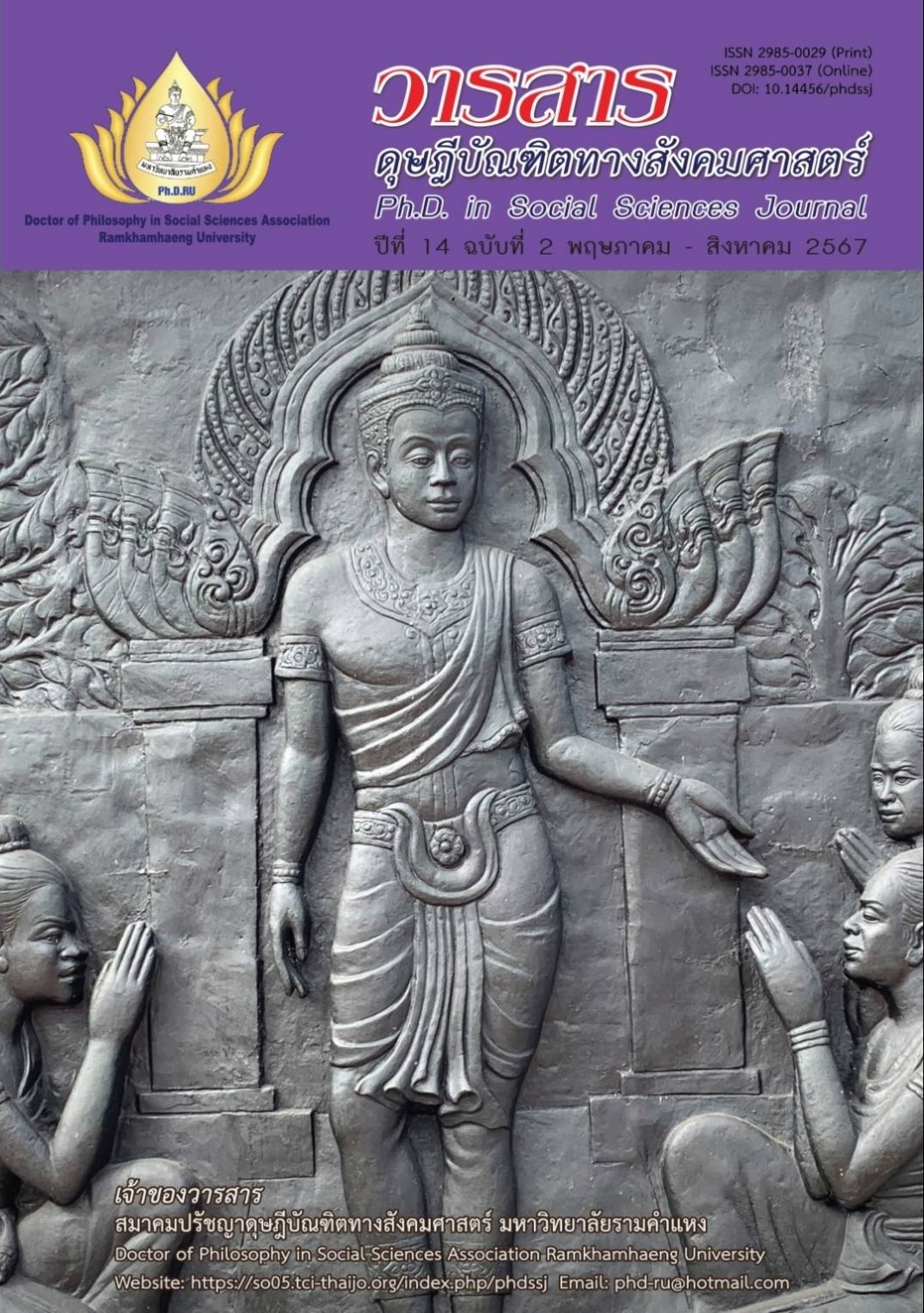Influencing Factors to Existence of Thai Auto Parts Manufacturers Business
Main Article Content
Abstract
This research article aims to study (1) Investigating levels of Market Demand, Transformation Demand, Environmental Demand, Competitive Strategy, and Business existence of the Thai automotive parts manufacturers, (2) Investigating factors influencing the Business existence of the Thai automotive parts manufacturers, and (3) Proposing a model of the Business existence of the Thai automotive parts manufacturers. This study was quantitative and qualitative research. The sample included 200 Thai automotive parts manufacturers. They were obtained by two-stage sampling and simple random sampling to verify causal models. Data analysis was conducted by a structural equation model using the AMOS software.
Findings are as follows: (1) The mean of all factors was at the highest level, and the analyzed model included Thai automotive parts manufacturers. With χ2/df = 2.911, RMSEA = 0.785, RMR = 0.170, and p-value = 0.000, (2) all factors influenced the Business existence of the Thai automotive parts manufacturers, and the Influence of Transformation Demand had the highest weight, followed by Environmental Demand, and (3) The Thai automotive parts manufacturers should implement a cost leadership strategy to maximize their profits and a niche marketing strategy to meet customer needs for their business existence.
Article Details

This work is licensed under a Creative Commons Attribution-NonCommercial-NoDerivatives 4.0 International License.
Academic articles, research articles, and book reviews in the Ph.D. in Social Sciences Journal are author’s opinions, and not the publisher’s, and is not the responsibility of the Ph.D. in Social Sciences Journal Philosophy Association, Ramkhamhaeng University. (In the case that research is done on human, the researcher has to be trained in Ethics for Doing Research on Human Training and has to produce the evidence of the training).
References
Automobile Association of Thailand. (2022). Automotive statistics in Thailand for the year 2023. Retrieved from https://data.thaiauto.or.th/auto/auto-manufacturer/auto-value-chain/manufacturers-auto-part-2000.html [In Thai]
Boehe, D., & Cruz, L. (2010). Corporate social responsibility, product differentiation strategy and export performance. Journal of Business Ethics, 91, 325-346.
Brown, M. (2020). Unpacking the theory of change. Stanford Social Innovation Review, 18(4), 44-50.
Daniel, H., & Perinaz, B. (2012). What a waste: A global review of solid waste management. World Bank.
Eamurai, P., Khantanapha, N., & Piriyakul, R. (2019). A study of factors that affect the self-practice of employees for the development of innovation capability of the Thai automotive industry. International Journal of Advanced and Applied Sciences, 6(8), 111-118.
Elkhidir, E., Mannakkara, S., Henning, T., & Wilkinson, S. (2022). Knowledge types and knowledge transfer mechanisms for effective resilience knowledge-sharing between cities – A case study of New Zealand. International Journal of Disaster Risk Reduction, 70(2), 102790.
Henttonen, K., Kianto, A., & Ritala, P. (2016). Knowledge sharing and individual work performance: an empirical study of a public sector organisation. Journal of Knowledge Management, 20(4), 749-768.
Hooper, D., Coughlan, J., & Mullen, M. R. (2008). Structural equation modelling: Guidelines for determining model fit. The Electronic Journal of Business Research Methods, 6(1), 53-60.
Howard, M., Roehrich, J. K., Lewis, M. A., & Squire, B. (2019). Converging and diverging governance mechanisms: The role of (Dys) function in long-term inter-organizational relationships. British Journal Management, 30(3), 624-644.
Modern Manufacturing. (2017). Tagged eastern economic corridor, EEC, industrial economics, industry 4.0, next-generation automotive, Thailand 4.0, investment in the EEC, Eastern Economic Corridor, automotive industry, modern automotive industry. Retrieved from https://www.mmthailand.com [In Thai]
Nisar, T. M., Prabhakar, G., Ilavarasan, P. V., & Baabdullah, A. M. (2020). Up the ante: Electronic word of mouth and its effects on firm reputation and performance. Journal of Retailing and Consumer Services, 53, 101726.
Porter, M. (2018). Industry structure and competitive strategy: Keys to profitability. Financial Analysts Journal, 36(4), 30-41.
Rajani, R. L., Heggde, G. S., Kumar, R., & Chauhan, P. (2022). Demand management strategies role in sustainability of service industry and impacts performance of company: Using SEM approach. Journal of Cleaner Production, 369, 133311.
Schumpeter, J. A. (1947). Theoretical problems of economic growth. The Journal of Economic History, 7(S1), 1-9.
Sonoda, Y., Oishi, K., Chomei, Y., & Hirooka, H. (2018). How do human values influence the beef preferences of consumer segments regarding animal welfare and environmentally friendly production?. Meat Science, 146, 75-86.
Suarta, I. M., Suwintana, I. K., Sudhana, I. F. P., & Hariyanti, N. K. D. (2017, September). Employability skills required by the 21st century workplace: A literature review of labor market demand. In International Conference on Technology and Vocational Teachers (ICTVT 2017) (pp. 337-342). Atlantis Press.
Thansettakij. (2022). NDC reveals that the digital economy in 2022. Retrieved from https://www.thansettakij.com/technology/technology [In Thai]
Westland, J. C. (2010). Lower bounds on sample size in structural equation modeling. Electronic commerce research and applications, 9(6), 476-487.
Zdaniuk, A., & Bobocel, D. (2015). The role of idealized influence leadership in promoting workplace forgiveness. The Leadership Quarterly, 20(5), 863-877.
Zehir, C., Can, E., & Karaboga, T. (2015). Linking entrepreneurial orientation to firm performance: The role of differentiation strategy and innovation performance. Procedia–Social and Behavioral Sciences, 210(2), 358-367.


